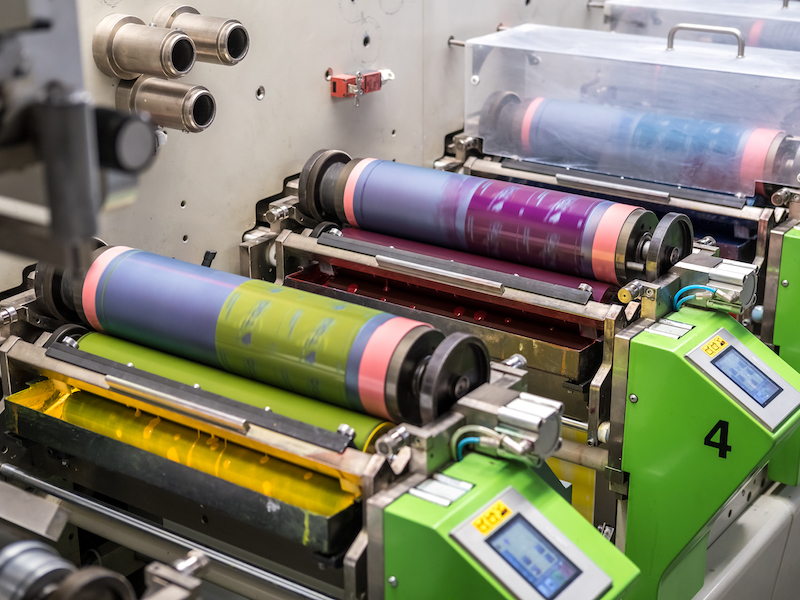In recent years, the fusion of AI in flexographic printing has sparked remarkable advancements that are reshaping the printing landscape. As industries seek smarter and more efficient ways to optimize their processes, AI technologies offer promising solutions, reinventing how flexographic printing works. This transformation targets a diverse audience, including marketing professionals eager to exploit new technological trends for better productivity and quality.
The integration of AI in flexographic printing heralds a new era of innovation. By adopting intelligent algorithms, printing processes have become markedly more efficient and precise, reducing errors and providing consistent quality. This article delves into the profound effects AI has on flexographic printing, offering insights for marketing professionals and paving the way for future innovations.

The Evolution of Flexographic Printing
Historically, flexographic printing has been the staple for packaging and labeling. Originating in the early 20th century, this method has constantly evolved, catering to the diverse needs of industries ranging from food to pharmaceuticals. Traditional flexographic printing depends heavily on manual efforts, which often lead to inconsistencies and quality variations. With growing demand for precision and speed, the need for technological advancement was inevitable.
The Role of AI in Modern Printing
The advent of AI has introduced groundbreaking changes in many industrial processes, and printing is no exception. AI algorithms can predict errors, adjust color inconsistencies, and optimize resource usage, thus minimizing waste. For marketing professionals, adopting AI in flexographic printing means accessing tools that offer predictive analytics and real-time monitoring, ensuring that their campaigns maintain high consistency standards.
Moreover, AI aids in managing complex designs and large volumes of printing tasks, enabling faster turnaround times. To explore how flexographic printing operates, you might find this discussion helpful.
Enhancements through AI
Precision and Quality Control
One of the significant contributions of AI in this sector is improving precision in print outputs. By utilizing machine learning algorithms, printing processes can auto-correct discrepancies, leading to near-perfect print quality. The ability to predict and adjust potential issues is a substantial advantage, reducing downtimes and maintaining high production rates.
Resource Management
AI-driven systems can analyze data in real-time, offering insights into resource utilization, thereby optimizing costs. For instance, minimizing ink consumption without compromising print quality is a crucial benefit for companies looking to enhance sustainability practices. Further insights into resource management can be found here.
Workflow Optimization
Automated workflows powered by AI facilitate smoother operations, reducing the manual intervention needed for tedious printing setups. It helps marketing teams achieve their targets efficiently by ensuring timely deliverables, necessary for successful campaigns. For instance, understanding the basics of flexographic printing can provide useful context.
Impact on Marketing Strategies
For marketing professionals, leveraging AI in flexographic printing can significantly uplift the quality and consistency of printed materials. The enhanced output quality ensures a uniform brand message across all channels, crucial for maintaining brand integrity. In addition, cost efficiency gained from AI helps better allocate budget resources to other innovative marketing endeavours.
Challenges and Solutions
Overcoming Implementation Barriers
The transition to AI-led printing solutions does present certain challenges. Initial setup costs and training personnel to adapt to these advanced systems require attention. However, the long-term benefits, including reduced waste and increased efficiency, offer ample justification.
Future Prospects
The continual advancements in AI indicate a promising future for flexographic printing. With innovations geared towards fully autonomous printing solutions, companies can expect even further efficiency and creativity in their production processes. Insights into related innovations can be pursued in this article.
Conclusion
The fusion of AI in flexographic printing is a positive shift in the printing arena, offering numerous benefits to those willing to embrace technological innovations. For marketing professionals, understanding these changes and leveraging them effectively will be key to staying ahead in increasingly competitive markets.

FAQ
1. How does AI enhance print quality in flexographic printing?
AI utilizes sophisticated algorithms to autocorrect errors, ensure uniformity, and optimize color reproduction, thus enhancing overall print quality.
2. What are the cost implications of implementing AI in printing?
Initial setup and training costs may be high; however, long-term savings are realized through reduced waste and improved efficiency.
3. How is AI integration affecting job opportunities in the printing industry?
While certain manual roles may reduce, AI opens new opportunities in system management and data analytics, demanding a shift in skillsets.






